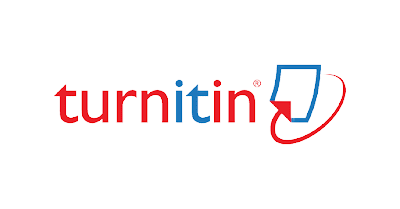UI/UX IMPLEMENTASI METODE HALAQAH PADA APLIKASI QURAN TAHFIDZ
Abstract
The activity of memorizing the Al-Qur’an is now increasing in popularity among society. There are various methods used in the process of memorizing the Al-Qur'an, one of which is the halaqah method. This method facilitates interaction between teachers and students, making it very suitable for application in educational institutions or communities such as Islamic boarding schools, tahfidz schools, community tahfidz groups in mosques. However, challenges arise when a teacher has to manage many students in one halaqah, making this method less efficient for large groups. This problem opens up opportunities for developing halaqah into an online format through the Quran application for memorization. This research aims to make it easier for teachers accompanying the memorization process to monitor the memorization progress of their group members. This research uses the UX Process and Methodology method to develop an application prototype. The prototype results were tested and reviewed by 11 Al-Qur'an memorizers as participants to ensure the application design met needs. Testing techniques and measuring tools use Usability Testing and Importance Performance Analysis (IPA) to measure the level of ease of use and user acceptance of the application. The test results showed a positive response from respondents with a usability score of 71.2, which indicated that the application design was considered quite easy to use, intuitive and efficient. This research also shows that the IPA method and usability testing using Mission Usability Testing (MIUS) have succeeded in showing user behavior towards the resulting design so that it is easy to identify design positions that need to be adjusted and improved.
Downloads
References
Akbar, A., & Ismail, H. (2016). Metode Tahfidz Al-Qur’an Di Pondok Pesantren Kabupaten Kampar (Vol. 24, Issue 1).
Badruzaman, D. (2019). Metode Tahfidz Al-Qur’an Di Pondok Pesantren Miftahul Huda Ii Kabupaten Ciamis.
Dalimunthe, A. Y. (2019). Halaqah Dan Munazharah Warisan Pendidikan Islam Klasik. Forum Paedagogik, 11(1), 15–26.
Elhadj, Y. O. M. (2010). E-Halagat: An E-Learning System For Teaching The Holy Quran. In TOJET: The Turkish Online Journal of Educational Technology (Vol. 9, Issue 1).
Engkizar, E., Sarianti, Y., Namira, S., Budiman, S., Susanti, H., & Albizar, A. (2022). Five Methods of Quran Memorization in Tahfidz House of Fastabiqul Khairat Indonesia. International Journal of Islamic Studies Higher Education, 1(1), 54–67. https://doi.org/10.24036/insight.v1i1.27
Ghufran, M., Niyaz, M. H., & Mustaqeem, M. (2018). I-Tasmik mobile platform – Enabling tahfiz student to memorize Al-Quran independently. Proceedings - International Conference on Information and Communication Technology for the Muslim World 2018, ICT4M 2018, 24–29. https://doi.org/10.1109/ICT4M.2018.00014
Hass, C. (2019). A Practical Guide to Usability Testing. In Consumer Informatics and Digital Health: Solutions for Health and Health Care (pp. 107–124). Springer International Publishing. https://doi.org/10.1007/978-3-319-96906-0_6
Hendra Brata, A., Fanani, L., & Rosalina, L. (2020). Evaluasi Usability Sistem Informasi Program Kb Berbasis Android Menggunakan Use Questionnaire. CYBERNETICS, 4(01), 50–57.
Kinesti, R. D. A., Taufiqurrahman, A. T., Shofianur, E., & Mu’jizah, U. (2023). Meningkatkan Kemampuan Menghafal Al-Qur’an dengan Menggunakan Metode Halaqah, Talqin, Murojaah di MI Al-Ma’shum Surakarta. YASIN, 3(3), 546–556. https://doi.org/10.58578/yasin.v3i3.1216
Mardalena, O., & Andryani, R. (2021). Analisis Kualitas Layanan Website Pada Universitas Terbuka Palembang Menggunakan Metode Webqual 4.0 Dan Importance Performance Analysis (IPA). Journal of Information Systems and Informatics, 3(4). http://journal-isi.org/index.php/isi
Mardiyah, R., Ramayani, N., & Wiguna, S. (2022). Implementasi Metode Halaqah Dalam Meningkatkan Kemampuan Menghafal Al-Qur’an Di Pondok Pesantren Kampung Qur’an Pulau Banyak. Dewantara : Jurnal Pendidikan Sosial Humaniora, 1(4), 143–154.
Muh. Mustakim. (2021). The Development of Learning Strategies in Pesantren Studies on the Transformation of the Teaching System in Pesantren. IJORER : International Journal of Recent Educational Research, 2(2), 224–236. https://doi.org/10.46245/ijorer.v2i2.94
Mustaqim, Moh. R., Maghfiroh, M., & Nurhaedha, H. (2020). Management of Halaqah Tahfidz al-Qur’an in Darut Taqwa Ponorogo Islamic Boarding School. Jurnal Tarbiyatuna, 11(2), 128–142. https://doi.org/10.31603/tarbiyatuna.v11i2.3040
Musyafa’ah, N. L., & Masyhud, F. (2021). Tabarak Method as a Means of Da’wa to Make it Easier for Children to Memorize The Quran. Proceedings of International Conference on Da’wa and Communication, 3(1), 124–138.
Naqiyah, Abidin, A. Z., Mu’Awanah, E., Elfi Mu, I., Zuhri, M. S., & Asmawi. (2020). Fast Memorizing Al-Quran Through Tafsir and Tahfidz Training: Immersion in Hanifida Method Super Base Camp Jombang as A Living Quran. Review of International Geographical Education (RIGEO), 10(4), 758–769. https://doi.org/10.33403/rigeo.791618
Naza, L. (2021). Methods of Quranic Memorization (Hifz) inIndonesia(An Integrated Technique). JOURNAL OF HUPO_LINEA, 2(1), 18–24. https://ejournal.anotero.org/index.php/hupo
Nugroho, M. O., & Cahyono, A. B. (2023). Perancangan Ui/Ux Digital Signage Untuk Peningkatan Akses Informasi Di Fakultas Teknologi Industri Uii. EDUSAINTEK: Jurnal Pendidikan, Sains Dan Teknologi, 11(2), 445–462. https://doi.org/10.47668/edusaintek.v11i2.1037
Parrillo, J. J. (2017). Paleo Journey: An Interactive Paleolithic Cave Art Experience. Paleo Journey: An Interactive Paleolithic Cave Art Experience. Using the User Experience (UX) Design Process to Develop An Using the User Experience (UX) Design Process to Develop An Interactive and Immersive Paleolithic Cave Art Exhibit Suitable for Interactive and Immersive Paleolithic Cave Art Exhibit Suitable for Children Between Five (5) and Seven (7) Years Old. Children Between Five (5) and Seven (7) Years Old. https://repository.rit.edu/theses
Rachmawati, I. N. (2007). Pengumpulan Data Dalam Penelitian Kualitatif: Wawancara.
Samsuri, I., Ariyanto, A., & Abidin, N. (2021). Pelaksanaan Metode Yadain Dalam Meningkatkan Kemampuan Mmenghafal Al-Quran Di Pesantren Tahfidz Alam Qur’an Ponorogo. Jurnal Mahasiswa TARBAWI: Journal on Islamic Education, 5(1), 16–25. http://studentjournal.umpo.ac.id/index.php/tarbawi
Soleh, A., Maya, R., & Priyatna, M. (n.d.). Metode Halaqah Dalam Pembelajaran Tahfidz Alquran Di Pondok Pesantren Tahfidz Alquran Darussunnah Parung Kabupaten Bogor Tahun 2018. Prosiding Al Hidayah Pendidikan Agama Islam, 43–52.
Tomlin, W. C. (2018). UX optimization: Combining behavioral UX and usability testing data to optimize websites. In UX Optimization: Combining Behavioral UX and Usability Testing Data to Optimize Websites. Apress Media LLC. https://doi.org/10.1007/978-1-4842-3867-7
Copyright (c) 2024 Dianingtyas Fajarini, Kholid Haryono

This work is licensed under a Creative Commons Attribution-ShareAlike 4.0 International License.
Jurnal allows anyone to compose, correct, and do derivative works, even for commercial purposes, as long as they credit for the original work. This license is the freest. It is recommended for maximum distribution and use of licensed material.
The submitted paper is assumed not to contain any proprietary materials that are not protected by patent rights or patent applications; The responsibility for technical content and protection of proprietary materials rests with the authors and their organizations and not the responsibility of journal or its editorial staff. The primary (first/appropriate) author is responsible for ensuring that the article has been viewed and approved by all other authors. The author's responsibility is to obtain all necessary copyright waivers to use any copyrighted material in the manuscript before submission.
Jurnal Pendidikan, Sains dan Teknologi allows the author(s) to hold the copyright without restrictions and allow the author(s) to retain publishing rights without restrictions. Jurnal Pendidikan, Sains dan Teknologi CC-BY-SA or an equivalent license as the optimal license for the publication, distribution, use, and reuse of scholarly work. Jurnal Pendidikan, Sains dan Teknologi allows the author(s) to hold the copyright without restrictions and allow the author(s) to retain publishing rights without restrictions. Jurnal Pendidikan, Sains dan Teknologi CC-BY-SA or an equivalent license as the optimal license for the publication, distribution, use, and reuse of scholarly work.
In developing strategy and setting priorities Jurnal Pendidikan, Sains dan Teknologi recognize that free access is better than priced access, libre access is better than free access, and libre under CC-BY-SA or the equivalent is better than libre under more restrictive open licenses. We should achieve what we can when we can. We should not delay achieving free in order to achieve libre, and we should not stop with free when we can achieve libre.
Jurnal Pendidikan, Sains dan Teknologi is licensed under a Creative Commons Attribution-ShareAlike 4.0 International License.
You are free to:
- Share a copy and redistribute the material in any medium or format
- Adapt a remix, transform, and build upon the material for any purpose, even commercially.
- The licensor cannot revoke these freedoms as long as you follow the license terms.






